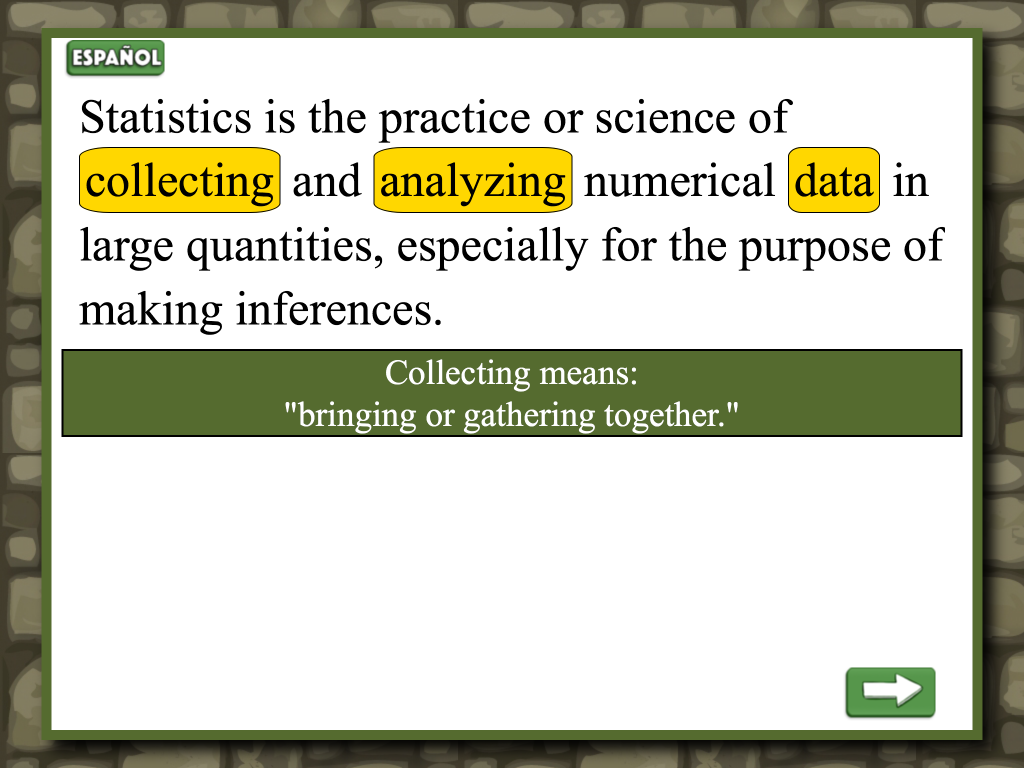Teaching statistics tip: Know your students
Almost always when I get asked to teach anything my answer is:
No.
I don’t even think about it . Just, no. I’m too busy. Usually, I’ll teach one graduate class a year and that’s it. However, recently I had the opportunity to teach an introduction to statistics course and design the whole course from the ground up, which sounded like my idea of fun. The college is predominantly an arts school, with students majoring in screenwriting, dance, drama and a smattering of entertainment business majors.
Normally, when I teach graduate statistics courses I use SAS, I require students to learn at least a minimal amount of programming and be able to do things like partition the sums of squares.

It just so happens that The Spoiled One, who is a Creative Writing major (what does she want to be when she graduates? Unemployed, apparently) took statistics last year, which resulted in many 11 pm (2 am Eastern time where she attends school) phone calls to me on things like how to compute the area under the curve between two z-scores.
Despite my best efforts, I believe she left the class with zero conviction that she would ever use statistics, and I really don’t blame her. There is not a lot of call in one’s daily life for looking up values in a z table, it being the 21st century and all and us having computers.
Here is my honest appraisal of my soon-to-be students – nearly 100% of them will be able to use skills such as creating graphs with Excel, computing averages, understanding the difference between the median and the mean and when which measure is appropriate. I can tell them truly how they could use this information in deciding which contract to accept, in which film to invest and whether a particular dance studio is preferable to another in terms of business viability. There is less than a 10% chance that as juniors and seniors in an arts college they are going to change their minds and decide they want to go into a research career. If they do make that choice, everything they learn in this course will apply. What I did not do was include a lot of proofs and matrix algebra or computation.
I gave some thought to using JMP because of the graphics, and to SAS Studio, because it is available free and we could use the tasks menu, which is pretty cool, but the fact is these students are most likely familiar with Excel and the campus already has a license. It’s installed on every computer in the lab. Installing the analysis toolpak is super-easy, whether you are using Office 365 or the regular Office (I hear some people calling that the productivity suite).
So, if I am not having students use SAS or calculate the area under a curve, what am I doing?
One thing I am requiring is that every student create their own livebinder. You’re welcome to take a look at it in the livebinder I’m preparing for my own purposes for the course. Just look under the livebinder assignment tab.
I have a lot more to write about this later. Right now, I have guests on the way so I’ll try to post more tomorrow.

Sorry for the interruption :<
[Answer at your leisure or not at all. I will not be offended, honest!]
I would like to gather information from a questionnaire given to People with doctorates teaching at universities in North America (or just Canada would be OK if it's easier).
My analysis will just be dead simple descriptive stats. I have done that off and on for pay over the past 30 years, so that's OK.
What confounds me is that I would like to avoid any selection bias, particularly self-selection. I expect there will be some self-selection effect because not everybody would be responsive. I could live with that, but I would like to minimize that effect as much as possible.
I would like to be able to do this in a very short period of time and minimize any 'cross-talk' effects from publicity or people consulting others.
In short, I would like to be have reasonable confidence that the results of my questionnaire reflect knowledge and opinion across the group at a given point in time.
Sorry for the length of this. If you could just point me to a resource I would be obliged.
I have two problems that confound me:
1) How do I get a representative list. Even if I did this manually by scraping University websites for faculty contacts, how can I vet the data without bias?
2) Assuming I have the list I need, how does one approach people on the list in such a way that it minimizes bias?
I am looking for percentages that give a broad indication. I am not looking for decimal point accuracy, but I am looking for the results to be sound.
I would be grateful if you took a moment to help, but I will not be offended in the least if you follow the reasonable protocol of ignoring unsolicited contacts.
Cheers!
The National Science Foundation used to collect information on everyone graduating with a Ph.D. They asked you to give the address of someone who would always be able to reach you. For 9 years, until she passed away, my grandmother would get a regular survey, that she would forward to me. You might see if they still do that, and, if so, if there is a de-identified public data set you might be able to use for your purposes.
Thanks for the article. It will be very useful for my students. Keep up the good work. For more stats related educational topic follow https://mlcrunch.blogspot.com